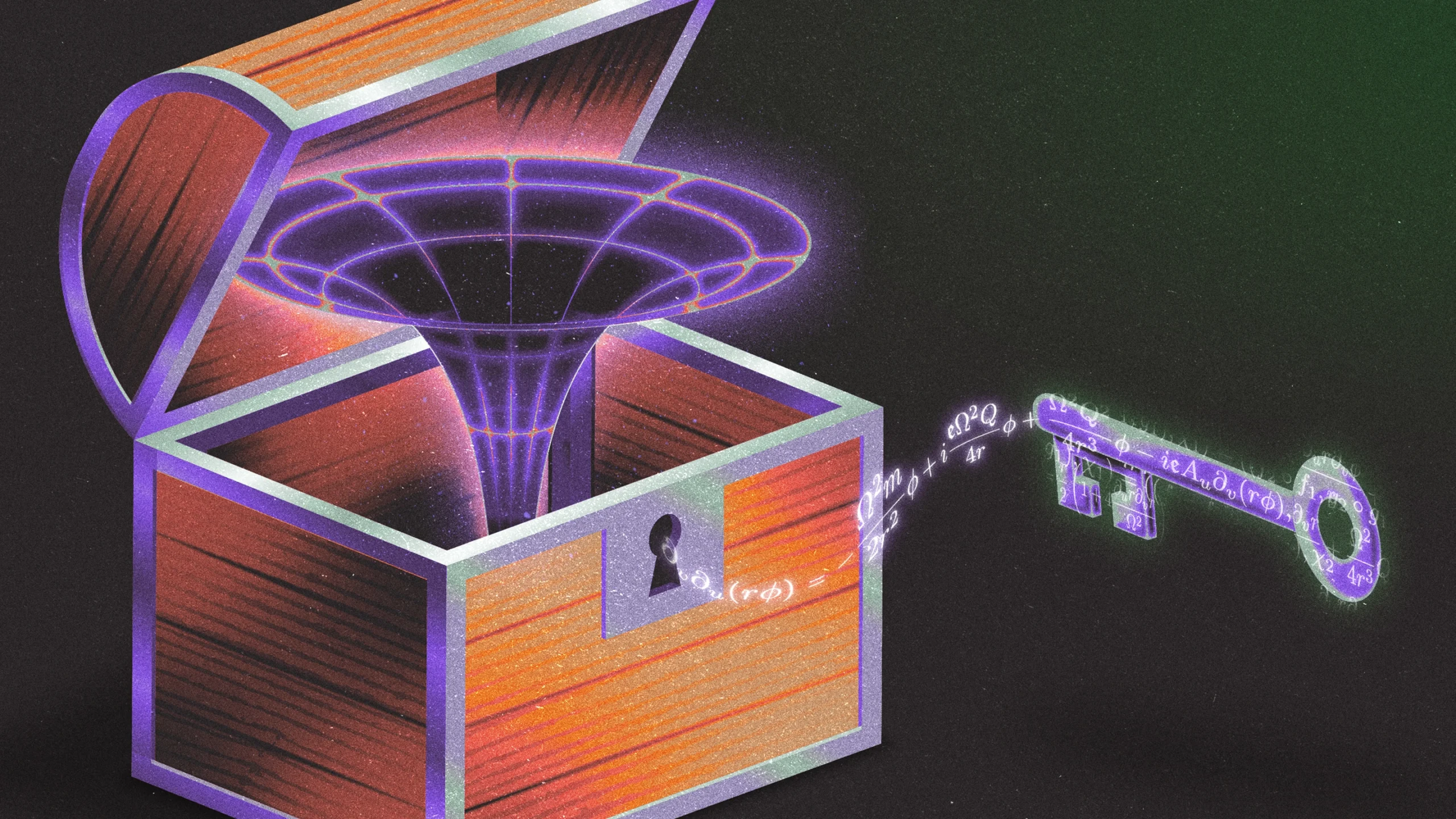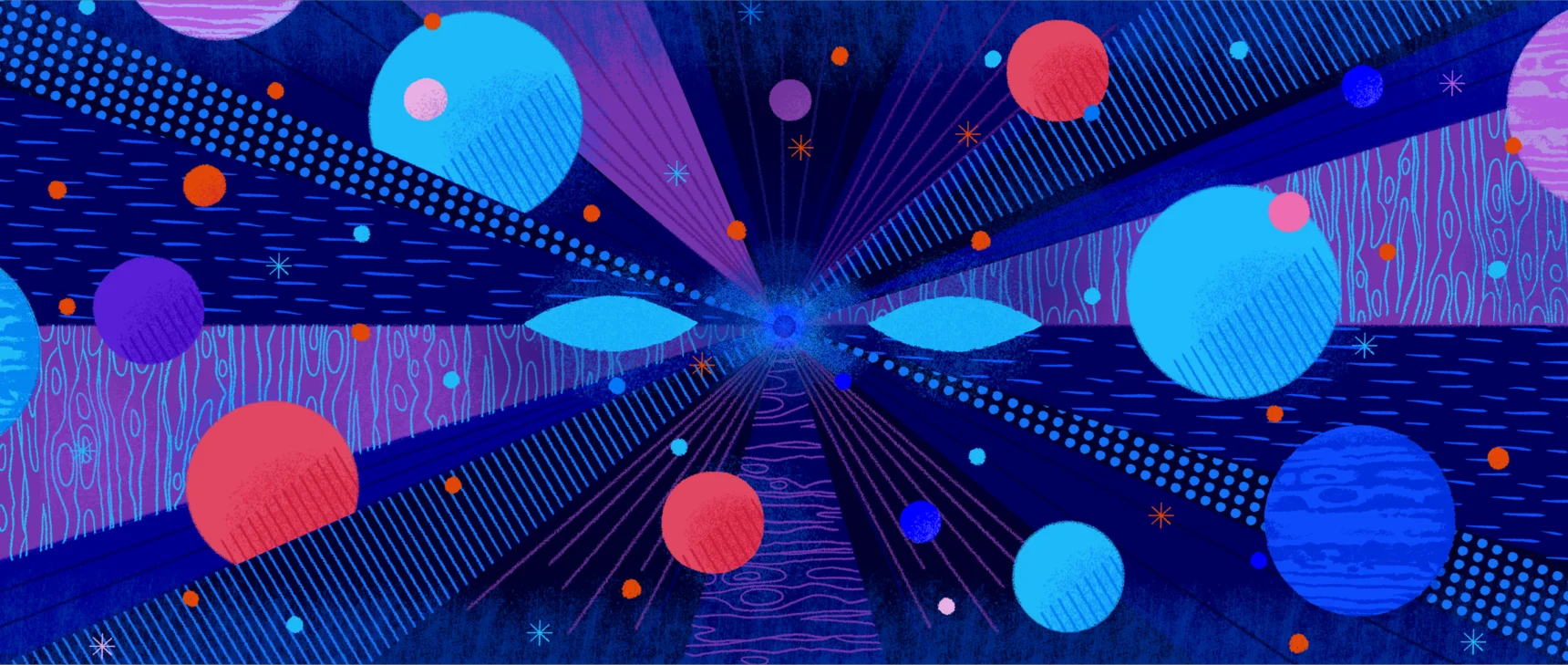Mathematicians Prove Hawking Wrong About the Most Extreme Black Holes

Introduction
To understand the universe, scientists look to its outliers. “You always want to know about the extreme cases — the special cases that lie at the edge,” said Carsten Gundlach, a mathematical physicist at the University of Southampton.
Black holes are the enigmatic extremes of the cosmos. Within them, matter is packed so tightly that, according to Einstein’s general theory of relativity, nothing can escape. For decades, physicists and mathematicians have used them to probe the limits of their ideas about gravity, space and time.
But even black holes have edge cases — and those cases have their own insights to give. Black holes rotate in space. As matter falls into them, they start to spin faster; if that matter has charge, they also become electrically charged. In principle, a black hole can reach a point where it has as much charge or spin as it possibly can, given its mass. Such a black hole is called “extremal” — the extreme of the extremes.
These black holes have some bizarre properties. In particular, the so-called surface gravity at the boundary, or event horizon, of such a black hole is zero. “It is a black hole whose surface doesn’t attract things anymore,” Gundlach said. But if you were to nudge a particle slightly toward the black hole’s center, it would be unable to escape.
In 1973, the prominent physicists Stephen Hawking, James Bardeen and Brandon Carter asserted that extremal black holes can’t exist in the real world — that there is simply no plausible way that they can form. Nevertheless, for the past 50 years, extremal black holes have served as useful models in theoretical physics. “They have nice symmetries that make it easier to calculate things,” said Gaurav Khanna of the University of Rhode Island, and this allows physicists to test theories about the mysterious relationship between quantum mechanics and gravity.

In 1973, Stephen Hawking and two other prominent physicists hypothesized that extremal black holes could never form.
Santi Visalli/Getty Images
Now two mathematicians have proved Hawking and his colleagues wrong. The new work — contained in a pair of recent papers by Christoph Kehle of the Massachusetts Institute of Technology and Ryan Unger of Stanford University and the University of California, Berkeley — demonstrates that there is nothing in our known laws of physics to prevent the formation of an extremal black hole.
Their mathematical proof is “beautiful, technically innovative and physically surprising,” said Mihalis Dafermos, a mathematician at Princeton University (and Kehle’s and Unger’s doctoral adviser). It hints at a potentially richer and more varied universe in which “extremal black holes could be out there astrophysically,” he added.
That doesn’t mean they are. “Just because a mathematical solution exists that has nice properties doesn’t necessarily mean that nature will make use of it,” Khanna said. “But if we somehow find one, that would really [make] us think about what we are missing.” Such a discovery, he noted, has the potential to raise “some pretty radical kinds of questions.”
The Law of Impossibility
Before Kehle and Unger’s proof, there was good reason to believe that extremal black holes couldn’t exist.
In 1973, Bardeen, Carter and Hawking introduced four laws about the behavior of black holes. They resembled the four long-established laws of thermodynamics — a set of sacrosanct principles that state, for instance, that the universe becomes more disordered over time, and that energy cannot be created or destroyed.
In their paper, the physicists proved their first three laws of black hole thermodynamics: the zeroth, first and second. By extension, they assumed that the third law (like its standard thermodynamics counterpart) would also be true, even though they were not yet able to prove it.
That law stated that the surface gravity of a black hole cannot decrease to zero in a finite amount of time — in other words, that there is no way to create an extremal black hole. To support their claim, the trio argued that any process that would allow a black hole’s charge or spin to reach the extremal limit could also potentially result in its event horizon disappearing altogether. It is widely believed that black holes without an event horizon, called naked singularities, cannot exist. Moreover, because a black hole’s temperature is known to be proportional to its surface gravity, a black hole with no surface gravity would also have no temperature. Such a black hole would not emit thermal radiation — something that Hawking later proposed black holes had to do.
In 1986, a physicist named Werner Israel seemed to put the issue to rest when he published a proof of the third law. Say you want to create an extremal black hole from a regular one. You might try to do so by making it spin faster or by adding more charged particles. Israel’s proof seemed to demonstrate that doing so could not force a black hole’s surface gravity to drop to zero in a finite amount of time.
As Kehle and Unger would ultimately discover, Israel’s argument concealed a flaw.
Death of the Third Law
Kehle and Unger did not set out to find extremal black holes. They stumbled on them entirely by accident.
They were studying the formation of electrically charged black holes. “We realized that we could do it” — make a black hole — “for all charge-to-mass ratios,” Kehle said. That included the case where the charge is as high as possible, a hallmark of an extremal black hole.
Dafermos recognized that his former students had uncovered a counterexample to Bardeen, Carter and Hawking’s third law: They’d shown that they could indeed change a typical black hole into an extremal one within a finite stretch of time.
Kehle and Unger started with a black hole that doesn’t rotate and has no charge, and modeled what might happen if it was placed in a simplified environment called a scalar field, which assumes a background of uniformly charged particles. They then buffeted the black hole with pulses from the field to add charge to it.
These pulses also contributed electromagnetic energy to the black hole, which added to its mass. By sending diffuse, low-frequency pulses, the mathematicians realized that they could increase the black hole’s charge faster than its mass — precisely what they needed to complete their proof.
After discussing their result with Dafermos, they pored over Israel’s 1986 proof and identified his error. They also constructed two other solutions to Einstein’s equations of general relativity that involved different ways of adding charge to a black hole. Having disproved Bardeen, Carter and Hawking’s hypothesis in three different contexts, the work should leave no doubt, Unger said: “The third law is dead.”
The pair also showed that the formation of an extremal black hole would not open the door to a naked singularity, as physicists had feared. Instead, extremal black holes seem to lie on a critical threshold: Add the right amount of charge to a dense cloud of charged matter, and it will collapse to form an extremal black hole. Add more than that, and rather than collapse into a naked singularity, the cloud will disperse. No black hole will form at all. Kehle and Unger are just as excited by this result as they are by their proof that extremal black holes can exist.
“This is a beautiful example of math giving back to physics,” said Elena Giorgi, a mathematician at Columbia University.
The Impossible Made Visible
While Kehle and Unger proved that it’s theoretically possible for extremal black holes to exist in nature, there’s no guarantee that they do.
For one thing, the theoretical examples possess maximal charge. But black holes with a discernible charge have never been observed. It’s far more likely to see a black hole that’s quickly rotating. Kehle and Unger want to construct an example that reaches the extremal threshold for spin, rather than charge.
But working with spin is much more mathematically challenging. “You need a lot of new math, and new ideas, to do that,” Unger said. He and Kehle are just starting to investigate the problem.
In the meantime, a better understanding of extremal black holes can provide further insights into near-extremal black holes, which are thought to be plentiful in the universe. “Einstein didn’t think that black holes could be real [because] they’re just too weird,” Khanna said. “But now we know the universe is teeming with black holes.”
For similar reasons, he added, “we shouldn’t give up on extremal black holes. I just don’t want to put limits on nature’s creativity.”
Correction: August 25, 2024
This article originally stated that the physicist John Bardeen hypothesized that extremal black holes cannot exist. It was James Bardeen, not his father John, who made this claim in a 1973 paper written with Stephen Hawking and Brandon Carter.



